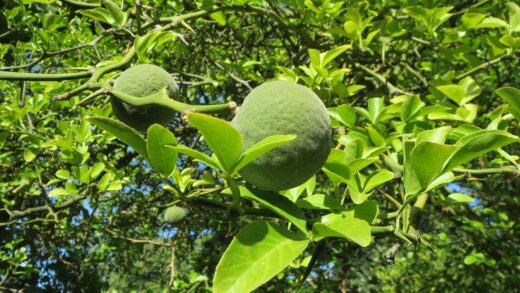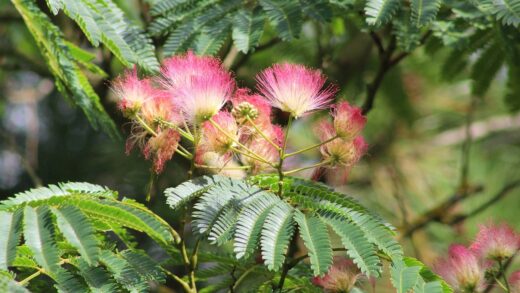Successfully guiding a weigela shrub through the winter months is a critical aspect of its annual care cycle, particularly in climates that experience freezing temperatures and harsh conditions. While many weigela cultivars are bred for cold hardiness, proper preparation for dormancy and protection from winter’s extremes can make a significant difference in the plant’s health, survival, and subsequent spring performance. Understanding the principles of winterization ensures that the shrub not only endures the cold but emerges in spring ready for vigorous growth and a spectacular display of flowers.
The process of wintering weigela is not a single event but a series of preparatory steps taken in the autumn to help the plant transition into a state of dormancy. Dormancy is a natural, protective mechanism that allows the plant to conserve energy and survive periods of environmental stress, such as freezing temperatures and reduced water availability. The gardener’s role is to facilitate this natural process and provide additional protection where necessary, based on the specific cultivar’s hardiness and the severity of the local climate.
Effective winter care involves managing water and nutrients in the fall, providing physical protection for the root system, and safeguarding the branches from potential damage from snow, ice, and wind. For newly planted shrubs, this first winter is a particularly vulnerable period, and extra attention is required to ensure their successful establishment. Even for mature plants, a well-executed winterization strategy can prevent dieback and promote a stronger start in the spring.
This article provides a detailed guide to the wintering of weigela, from assessing the hardiness of your specific variety to the practical steps of preparing it for the cold. We will cover how to protect the shrub in different climate zones and what care is needed both during and after the winter season. By following these guidelines, you can provide your weigela with the protection it needs to withstand the challenges of winter and return with renewed vitality year after year.
Assessing the winter hardiness of weigela
The first step in planning a winter care strategy for weigela is to understand the hardiness of the specific cultivar you are growing. Plant hardiness is typically rated using a zone system, such as the USDA Plant Hardiness Zone Map, which categorizes regions based on their average annual minimum winter temperature. Weigela cultivars vary in their cold tolerance, with most falling within zones 4 to 8. It is crucial to select a variety that is rated as hardy for your specific climate zone to ensure its best chance of survival.
More articles on this topic
When you purchase a weigela, the plant tag or description should provide its hardiness zone rating. For example, a shrub rated for zone 4 can be expected to survive winter temperatures down to -34°C to -29°C. If you live in zone 4, this plant is a suitable choice. However, if you live in a colder zone, such as zone 3, a zone 4 plant would be considered marginal and would require significant winter protection to survive. Conversely, a weigela rated for zone 5 might struggle in the heat of a zone 9 summer.
It is also important to consider the concept of microclimates within your own garden. A location that is sheltered from harsh winter winds, such as near a south-facing wall, may be effectively a half-zone warmer than a more exposed area of your property. These protected spots can be ideal for growing cultivars that are slightly less hardy than what is typically recommended for your region. Understanding these subtle variations in your landscape can help you position your weigela for optimal winter survival.
For gardeners living at the colder end of a weigela’s hardiness range, it is wise to select cultivars specifically bred for improved cold tolerance. Many modern varieties have been developed from parent stock that has proven its ability to withstand severe winters. Researching and choosing one of these hardier cultivars provides a built-in advantage and reduces the amount of supplemental winter protection that will be required.
Preparing the shrub for winter
Proper preparation for winter begins in the late summer and autumn, long before the first frost arrives. One of the most important steps is to cease all fertilization by mid-summer. Applying fertilizer late in the season encourages the growth of new, tender shoots that will not have time to mature and “harden off” before freezing temperatures set in. This succulent growth is extremely vulnerable to frost damage, which can stress the plant and create entry points for disease.
More articles on this topic
Watering practices should also be adjusted in the autumn. While it is important not to let the weigela enter winter in a state of drought stress, you should gradually reduce the frequency of watering as the weather cools. This helps to signal to the plant that it is time to slow its growth and begin the process of entering dormancy. However, it is crucial to provide one last deep, thorough watering after the leaves have dropped but before the ground freezes solid. This ensures the roots are well-hydrated to withstand the drying effects of frozen ground and winter winds.
Good garden sanitation in the fall is another key preparatory step. After the weigela has dropped its leaves, rake them up from around the base of the plant and dispose of them. This practice helps to remove any fungal spores or insect eggs that might be overwintering in the leaf litter, reducing the likelihood of disease and pest problems in the following spring. This simple act of cleaning up is a fundamental part of integrated pest and disease management.
Finally, refrain from any significant pruning of your weigela in the autumn. Pruning can stimulate new growth, which is exactly what you want to avoid at this time of year. The proper time to prune weigela for shaping and health is immediately after it finishes flowering in the summer. Leaving the plant’s structure intact over the winter also provides some measure of self-protection against the elements.
Protecting weigela in colder climates
In regions that experience severe winters, particularly those at the edge of the weigela’s hardiness range (e.g., zone 4), providing additional winter protection is a wise precaution. The most critical area to protect is the plant’s root system, which is more sensitive to cold than the stems. Applying a thick layer of mulch around the base of the shrub after the first hard frost but before the ground freezes is the most effective way to do this. A 10 to 15-centimeter layer of shredded bark, wood chips, or straw will insulate the soil, protecting the roots from extreme cold and the damaging effects of freeze-thaw cycles.
Young or newly planted weigela are especially vulnerable during their first winter and benefit greatly from extra protection. In addition to a thick layer of mulch, constructing a physical barrier around the plant can shield it from harsh, drying winds and heavy snow. A simple structure can be made by driving three or four stakes into the ground around the shrub and wrapping them with burlap or snow fencing. The enclosure can then be loosely filled with insulating material like straw or shredded leaves for added protection.
For established shrubs in very cold or exposed locations, protecting the branches from winter damage is also a concern. Desiccating winter winds can dry out the branches, leading to dieback. A burlap windbreak can be very effective in these situations. It’s important that the covering does not touch the plant’s branches, as this can trap moisture and cause damage. Additionally, tying the branches of upright weigela cultivars together loosely with twine can prevent them from splaying or breaking under the weight of heavy snow or ice.
In areas with reliable, deep snow cover, the snow itself acts as an excellent natural insulator. A deep blanket of snow protects the base of the plant and its roots from extreme air temperatures and wind. However, when clearing paths and driveways, avoid piling heavy, dense snow onto the shrub, as the weight can easily damage the branches.
Care during and after winter
During the winter months, a well-prepared weigela is dormant and requires very little care. The primary task is to monitor the plant for any physical damage. After heavy snowfalls, it can be beneficial to gently brush off the accumulated snow from the branches with a broom to prevent them from bending or breaking under the weight. Avoid shaking the branches, especially when they are coated in ice, as this can cause them to snap.
It is also important to be mindful of potential damage from animals. In winter, when other food sources are scarce, rabbits and deer may browse on the tender bark and stems of shrubs like weigela. If this is a known problem in your area, a cylinder of hardware cloth or a tree guard placed around the base of the plant can prevent rabbits from girdling the stems. The larger burlap enclosures used for wind protection will also serve as a deterrent for deer.
As winter begins to transition into spring, it is time to start reversing the winterization process. The protective mulch should be gradually pulled back from the crown of the plant as the ground thaws. This allows the soil to warm up and prevents moisture from being trapped against the main stems, which could encourage rot. Any burlap wraps or other protective coverings should be removed on an overcast day to allow the plant to reacclimate to direct sunlight gradually.
Once the threat of hard frost has passed and the plant begins to show signs of new growth, you can assess it for any winter damage. Prune out any branches that have died back, are broken, or appear diseased. A small amount of tip dieback is common in colder climates and is not a cause for alarm. This post-winter cleanup is the final step in the wintering process, preparing the weigela for a new season of growth.

















